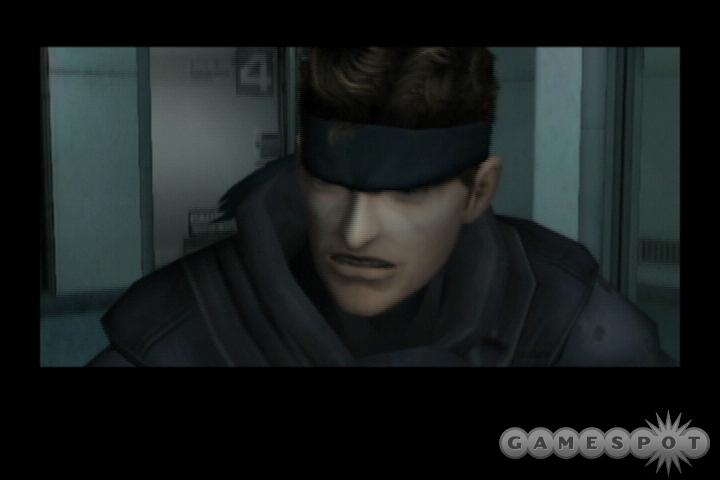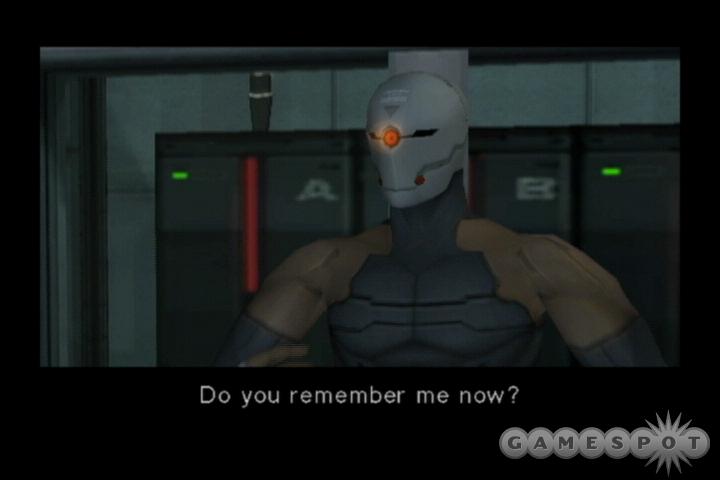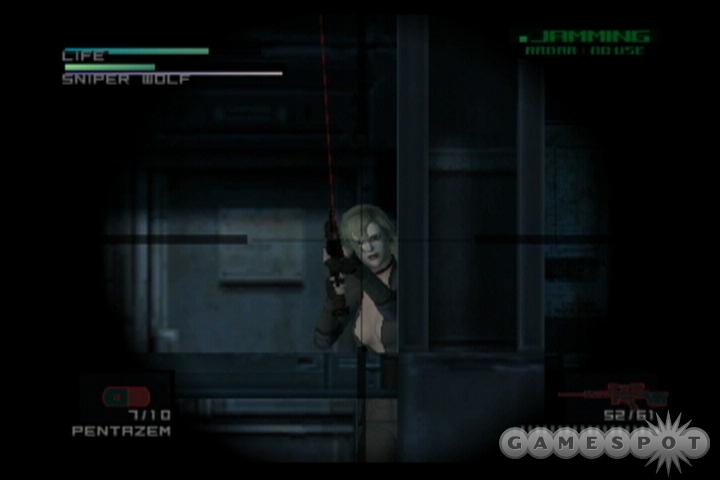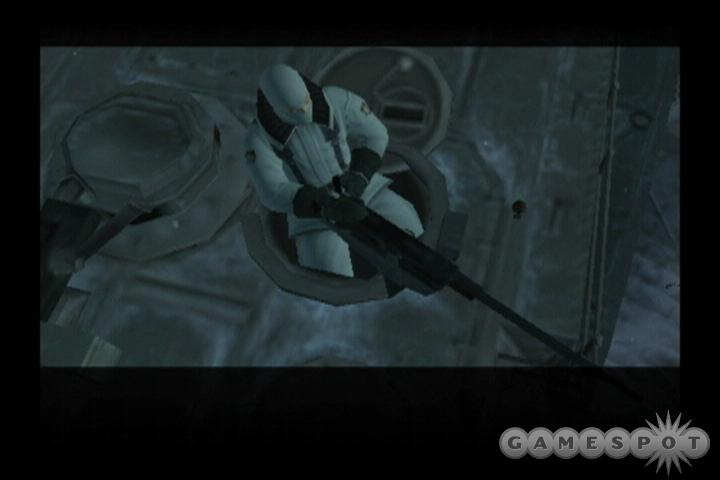If you're a video game publisher in need of a big hit, what's one surefire way to create a game with plenty of appeal and a ready-made audience? Well, you could always remake one of the most revered action games of the last decade. That's exactly what Konami (in collaboration with Nintendo and Silicon Knights) has done with Metal Gear Solid: The Twin Snakes, which is a modern-day update of Hideo Kojima's seminal 1998 stealth action classic. You might think it hasty for these companies to remake a game that's scarcely five years old when there are other older games that are just as deserving of a makeover. Regardless, The Twin Snakes retains nearly all of the qualities that made its original incarnation so memorable. It's too bad the new version doesn't add more to the experience for fans who still retain a clear memory of the original, but those who never played the original Metal Gear Solid will be in for a great ride.

Metal Gear Solid: The Twin Snakes takes place in the near-future, where the baddest superspy of all time, Solid Snake, is called out of retirement to infiltrate an Alaskan nuclear base. His mission is to save a couple of important old men and stop a group of genetically enhanced terrorists (who are being led by members of Snake's old squad) from launching a nuclear weapon. Actually, it's a lot more complicated than this. Along the way, Snake will uncover the existence of a new version of Metal Gear--the nuclear-equipped bipedal battle tank that's plagued his military career throughout the series--and will face off against some long-lost family he never knew he had.
The storyline takes too many twists and turns to mention, so fans of the original game will know exactly how complicated and interesting things get by the end of the game. Then again, this is part of the problem. If you've played the first game, you already know everything that's going to happen. No liberties were taken with the story, nor were any significant dialogue changes introduced in this remake. So unless you've never played Metal Gear Solid and don't know the details, none of the story sequences in The Twin Snakes will surprise you. If you're new to the series, you'll be struck by just how much story is in the game. You'll spend long stretches of time watching cutscenes and listening to dialogue instead of actually playing. The story can be long-winded, but it takes itself seriously and packs in a lot of action and drama. As a result, you'll probably really get into it if you give it half a chance to draw you in.
In fact, if you're familiar with Metal Gear Solid, you may be amazed at just how adherent this remake is to its source material. Pretty much all of the level layouts, enemy placements, dramatic interactions, and boss fights in the game are exactly as you remember them, which is both good and bad. This is good because it all worked the first time around, and it works just as well here. However, this is bad because if you were hoping for a significantly altered experience from the original game (such as what Capcom did with its Resident Evil remake), you'll be a little disappointed--even though this is still a great game.
As you'd expect by now, The Twin Snakes plays almost exactly like its PlayStation predecessor. Snake still has all of his old moves. He can back up against and can sidle along walls to avoid security cameras; he can peer around corners to detect searching guards (and can then sneak up behind them and break their necks); and he can use a vast arsenal of weapons, which includes a silenced SOCOM pistol, a FAMAS rifle, and guided Nikita missiles. All the old items you remember return as well, such as rations that restore your health and the unassuming cardboard box that lets Snake hide from guards. Alas, Snake's assortment of weapons hasn't really been beefed up much for this remake, so the only real additions are the M9 tranquilizer pistol and the PSG1-T sniper rifle, both of which first appeared in Metal Gear Solid 2: Sons of Liberty. These added weapons aren't really new or flashy, but they provide you with a bloodless way of taking out enemy guards.

All this is not to say everything in The Twin Snakes is old hat--or rather, at least it doesn't all come directly from the first game. For one thing, the developers have added the first-person shooting ability that made MGS2 a lot more fun to play than its predecessor. This gives the gameplay more depth, since the precision aiming lets you pull off feats that were impossible in the original game. You can score headshots when trying to eliminate guards (which obviously provide instant kills), or you can shoot security cameras to make your passage easier. Certain boss opponents also take more damage from shots to the head. Some lesser mechanics from MGS2 have made the transition here as well. The guards' bodies don't disappear like they did in MGS, so you'll have to hide them once you've killed or knocked them out. Interestingly, you can stuff them into empty lockers, or you can even hide in a locker yourself to escape roving enemies.
When MGS2 was released on the PS2 in late 2001, a lot of the prerelease hype was directed at the supposedly enhanced artificial intelligence of the enemy soldiers, and indeed, they were a lot harder to deal with thanks to their wider-ranging search patterns, increased ability to detect your passing, and better inter-area communications. This upgrade, too, has been rolled into The Twin Snakes, so you'll likely find the game a lot more challenging than the original MGS. When you take out a guard, some unseen commander will often radio in for a status report. If he fails to get a response, he'll dispatch a whole team of new guards to search the area to find out what's going on. This definitely keeps you on your toes, and it feels a lot more like you're fighting real soldiers than the mindless drones you choked by the dozens in the original game. Then again, the guards are still curiously unable to spot you when you're directly across the room from them. Apparently some things never change.
MGS brought cinematic production values to the Metal Gear series (and to gaming at large) that were downright amazing back in 1998, so it's fitting that special attention has been paid to this part of The Twin Snakes' production. Veteran Japanese action film director Ryuhei Kitamura was recruited to direct the real-time cutscenes, and his influence definitely shows in the flashy, sometimes over-the-top way the game's cinematics play out. There's liberal use of motion capture here, and some of the fight and action scenes are a whole lot more complex and cool than they used to be. Honestly, sometimes the cutscenes come off as a little too extreme, so you might wonder occasionally as to whether you're watching Metal Gear or The Matrix. Then again, there are some real standouts among the cinematics that are quite improved over the original game (though we don't want to spoil the story for anyone who hasn't played it). On the whole, the new cutscenes are fun to watch, and alongside the new gameplay mechanics, they definitely make up the most significant addition to the original game.

One look at the PlayStation version of Metal Gear Solid lends a lot of validity to The Twin Snakes' existence. To be blunt, the original game hasn't aged well at all, so it's nice to have a much more attractive and equally playable rendition that fans can hold onto for posterity. If you've only seen pictures or video of The Twin Snakes, don't be fooled. This game looks better in person. Visually, it's roughly on par with MGS2, with backgrounds and in-game character models that sport a similar high level of detail. The character models perhaps don't emote as well in the cutscenes, since their facial animations are often a little understated. But overall, The Twin Snakes ranks up there with some of the better-looking games for the GameCube. Granted, the aesthetics are a little bland. This is a military base, after all. But this is a stylistic choice and not a technical shortcoming. As for the game's frame rate, it's completely smooth almost all the time, though occasionally you'll see it drop noticeably. This only occurs in larger areas, though, and it's only for brief periods of time, so it's definitely not going to ruin the experience for anybody.
Metal Gear Solid was one of the first games to feature a stellar cast of voice actors. Prior to its release, video game voice-over was largely relegated to the level of B movies, but MGS upped the bar with a solid lineup of capable actors. Surprisingly, Konami has opted to rerecord the entire script for The Twin Snakes using (mostly) the same actors. This would make sense if there were radical changes to the script or even to the tone of the performances, but unfortunately, the quality of the voice work in The Twin Snakes is, at best, on par with what we heard five years ago. Snake's snarl is as potent as before, and the Colonel's gruff but helpful tone is also intact. Other characters have suffered in the remake, though. Dr. Naomi Hunter, in particular, sounds much flatter and much more bored than she did before. Mei Ling and Nastasha have bafflingly lost the ethnic accents that gave them their personalities in the previous game. Overall, the voice acting isn't bad by any means--so it's still better than what you'll hear in most games--but one has to wonder why the voice work was redone at all when the original performances were so great.
The rest of the sound design is of the high quality you've come to expect from the Metal Gear series. All of the classic sound effects, such as the little codec beep, are back, and all the military hardware, explosions, and gunfire sound great. The music is very similar to that of the original game, so it fits the tone of the espionage and political intrigue perfectly. As with the voice acting, the developers didn't take any big chances with the sounds, and the payoff is that this game sounds as much like Metal Gear Solid as any game that's borne the name.

The Twin Snakes, unfortunately, doesn't have a ton of replay value. Once you've beaten the game, you'll have access to a harder difficulty mode, but there's not really much else to see in the main game. The stickup minigame that first showed up in MGS2, in which you had to sneak up behind enemy soldiers and hold them up to retrieve their dog tags, is in here, and it's a fun diversion for those who like to collect every last thing. The briefing mode from the original game is back, and this time it takes place in full 3D and lets you switch around camera angles. Specifically, you can zoom in and out while Colonel Campbell and Dr. Hunter prep Snake for his mission. The demo theater lets you watch cutscenes from the game without having to actually play, but it would be nicer if the game let you skip around to specific scenes. Finally, there's a boss survival mode that, as you might guess, lets you fight all of the game's bosses in order--with only a single life bar--to see how far you can make it. This may seem like a lot of extras, but they don't really amount to a whole lot of extra game.
There's no doubt that The Twin Snakes is a great game on its own merits. It marries the better graphics and more entertaining gameplay from Sons of Liberty with the tighter, more intriguing storyline of the original MGS. If you've never played Metal Gear Solid before, here's your chance to experience a truly great game for the first time. If you have played it, here's your chance to experience it again--and better than ever. As long as you're not expecting any huge additions to the Metal Gear milieu, The Twin Snakes serves as a great revival of a true classic.